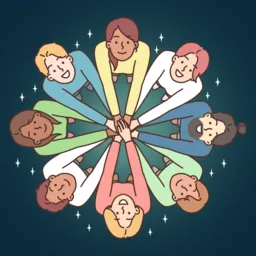When it comes to fundraising, relationships are everything. A one-time donation is great, but a loyal, engaged donor who sticks with your mission year after year is gold.
Whether you’re part of a public school district, an independent school, or an education foundation, strong donor relationships are essential for supporting student success and serve as the foundation for long-term impact. Here are eight best practices to help you build meaningful, lasting connections with your supporters.
1. Know Who Your Donors Are
Strong relationships begin with understanding. It’s essential to know who your donors are—not just their names and donation amounts, but their motivations, interests, and communication preferences. Segmenting your donor base can help you tailor your approach for different types of supporters, whether recurring givers, major donors, or those passionate about a specific program. Developing detailed donor personas gives your team a clearer picture of who you’re speaking to and allows for more relevant, compelling engagement. Make it a habit to ask for feedback through surveys or personal conversations so you can stay attuned to what matters most to them.
2. Make It Personal
Generic, mass messages rarely inspire loyalty. Donors want to feel seen and valued. Personalization in your communications is key to fostering connection. Always address donors by name, and when possible, reference their previous support—what they gave, when, and the cause or campaign they supported. Tailor your updates to reflect their interests; if someone has consistently given to your education initiatives, for instance, share stories and data from that specific area. These small touches demonstrate that you’re paying attention—and that their involvement is meaningful.
3. Say Thank You—A Lot
Gratitude should be a cornerstone of your donor relationships. A sincere thank-you, delivered promptly, can make a lasting impression. Ideally, thank-you notes or emails should go out within 48 hours of receiving a donation. Beyond the standard receipt, consider adding a personal message or even a handwritten note from a staff member or volunteer. A thank-you phone call can also be compelling, especially for first-time or major donors. Celebrating milestones—like a donor’s anniversary of giving or crossing a giving threshold—also helps reinforce their sense of value and belonging in your community.
4. Be Transparent and Earn Their Trust
Trust is the foundation of every strong relationship, and your donors need to believe in your integrity. That means being transparent about how donations are used and showing real results. Share detailed impact reports that include both success stories and concrete data. Be upfront about financials, and make that information accessible, not buried in your website’s footer. And when things don’t go perfectly? Own it. Share how you’re addressing the problem and your steps to improve, and be transparent, which shows that you respect your donors and are accountable to them.
5. Engage Beyond the Ask
Donors shouldn’t only hear from you when you need something. Regular, meaningful engagement keeps your mission in mind and shows that you value the relationship beyond the transaction. Check in to say hi and share the positive things going on. Share stories of impact throughout the year via email newsletters, videos, blog posts, or social media. Highlight the people and communities your donors are helping, and celebrate your progress together. Make space for feedback and two-way communication—it shows donors that their perspectives matter, not just their dollars.
6. Invite Them Into the Journey
Some donors want to do more than write a check—they want to be part of the mission. Give them the chance. Offer opportunities to volunteer, attend special events, or participate in behind-the-scenes experiences. Send newsletters updating your donors on how their support is making a difference. Major donors should be invited to serve on an advisory board or participate in strategic planning discussions. You can also tap into their networks by encouraging peer-to-peer fundraising campaigns. These opportunities deepen the emotional investment and turn supporters into true champions of your cause.
7. Use Data to Strengthen Relationships
Your donor database isn’t just a record of gifts—it’s a relationship-building tool. Use it to track every interaction, from donations and event attendance to email open rates and personal meetings. Monitor giving patterns to identify trends, such as when a regular donor lapses, and set reminders for essential follow-ups or anniversaries. With the right insights, you can spot when a donor might be ready to increase their support or when someone needs extra attention to stay engaged. Good data allows for proactive, not reactive, stewardship.
8. Build a Donor-Centric Culture
The way your entire organization views and interacts with donors matters. Donor stewardship shouldn’t be isolated to the development team—it should be part of your culture. Train staff and volunteers across departments to treat donors with respect, gratitude, and transparency. Make sure your programs team understands the importance of sharing impact stories. Celebrate donor contributions internally so everyone understands the supporters’ role in advancing your mission. When your organization embraces a donor-first mindset, your external relationships naturally become stronger and more authentic.
Final Thoughts
Donor relationships aren’t built overnight. They’re nurtured over time through consistent, thoughtful, and meaningful engagement. When you prioritize connection over transactions and lead with authenticity and appreciation, you create a community of supporters who will stand with your mission for years.
